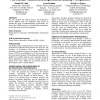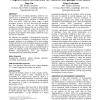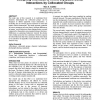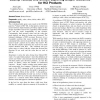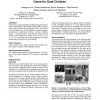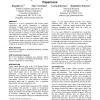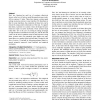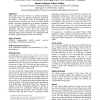CHI
2005
ACM
16 years 25 days ago
2005
ACM
The Keystroke-Level Model (KLM) has been shown to predict skilled use of desktop systems, but has not been validated on a handheld device that uses a stylus instead of a keyboard....
CHI
2005
ACM
16 years 25 days ago
2005
ACM
We first describe the Human Factors and Ergonomics Society (HFES), then our challenges with respect to meeting the needs of multidisciplinary professionals. We discuss how HFES ha...
97
Voted
CHI
2005
ACM
16 years 25 days ago
2005
ACM
The most common technique for resizing 3D objects in virtual environments is the use of 3D widgets. However, such techniques often exhibit usability problems due to difficulties i...
114
click to vote
CHI
2005
ACM
16 years 25 days ago
2005
ACM
An important way of making interfaces usable by nonexpert users is to enable the use of natural language input, as in natural language query interfaces to databases, or MUDs and M...
82
Voted
CHI
2005
ACM
16 years 25 days ago
2005
ACM
The main aim of this research is to understand how domestic technologies for collocated groups can be designed to afford enjoyable social interactions. A secondary aim is to devis...
64
Voted
CHI
2005
ACM
16 years 25 days ago
2005
ACM
87
Voted
CHI
2005
ACM
16 years 25 days ago
2005
ACM
We present a system designed to facilitate language development in deaf children. The children interact with a computer game using American Sign Language (ASL). The system consist...
CHI
2005
ACM
16 years 25 days ago
2005
ACM
PaperLens is a novel visualization that reveals trends, connections, and activity throughout a conference community. It tightly couples views across papers, authors, and reference...
90
Voted
CHI
2005
ACM
16 years 25 days ago
2005
ACM
Fitts' law, Steering law and Law of crossing, collectively known as the laws of action, model the speed-accuracy tradeoffs in common HCI tasks. These laws impose a certain sp...
CHI
2005
ACM
16 years 25 days ago
2005
ACM
In this paper we present "Homie" an artificial companion for elderly people. Our approach emphasizes amusement and benefit - amusement in form of entertainment and benef...

